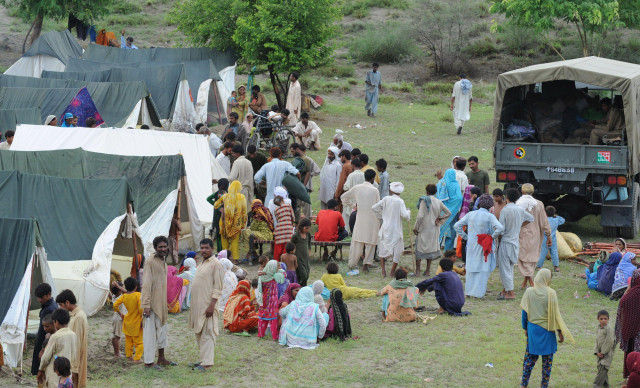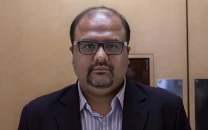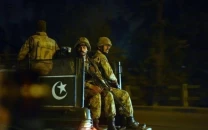City life woos some, others just want to go back
The Sindh police relief camp in Gadap Town looks impressive with 30 blocks and comprises 936 flats.

A medical camp has been set up by an NGO to provide free checkups to the internally displaced persons (IDPs) living in these flats. Another NGO claims to provide food to the flood survivors twice a day. Sweepers have been hired by the government to clean the outer compound of the area and it seems that health and hygiene - two correlated prerequisites that have been reported missing in most relief camps - are well taken care of here.
However, as always, a closer look reveals different stories that mar the apparent flawless exterior.
Liaquat Ali, who came from his village in interior Sindh with his two daughters, two sons and a wife, has not found an empty flat to live in yet. “I sit all day and all night waiting but it is of no use,” he laments.
A luckier IDP, Asif, is living with his 14 family members in two rooms of the complex. He leads the way to the flats, holding on to his radio. There is no electricity, no gas and all in all, not much to do. The women and children are sprawled across the floor, tiredly fanning themselves with wooden hand fans.
Asif’s wife says she wants to go home as soon as possible. “I don’t like the food here,” she confides, “Sometimes, I even throw it away.”
Many other IDPs are on the same page. They complain that while they do get food, the roti is stale and many of them have fallen sick.
At meal times, the Saylani Welfare Trust spreads out a dastarkhwan, laying out a communal tablecloth where everybody is supposed to eat together. However, several women refuse to come out because their community follows a strict code of purdah and they cannot sit and eat with other men.
Other IDPs lashed out against the way food was sometimes distributed, saying that packets of edibles were thrown at them in a manner bereft of respect.
“We will die hungry before we take food in this manner,” a group of men says.
Sajid, who owned a shop in Jacobabad, says that water is his biggest problem. “There is no water in the bathrooms,” he informs.
Of the two tanks in the building, residents claim only one has clean water. In the absence of electric motors to provide running water, IDPs gather around the open tank with buckets and large vessels. Amid the chaos of collecting water, people claim that two children have lost their lives when they fell into the tank.
The happy campers
Despite all problems, many people are happy to be here and say they would not want to go back to their villages even after the floods recede.
“We were labourers there and we are labourers here,” explains a man in a black shalwar kameez.
Anoter IDP, Usman has been in Karachi for three days and his sons have already found work in a nearby factory. He says they have to work if they want to live here.
“There is nothing left for us back home. If I find employment, I will stay here,” he says.
However, people who were relatively better-off and had their own lands plan to move back as soon possible.
Scaring off volunteers
A cause of trouble for the camp management is those volunteers and aid workers who come into the camp and start distributing items without consulting them.
Ozair, a 17-year-old student, had come to the camp with his friends to distribute cartons to the IDPs. However, the crowd began attacking them in their desperation to get their share. A policeman had to intervene, hitting out at the flood survivors with a baton to bring the situation under control.
“Please tell people who come with relief goods to first come to the revenue office,” says a government officer on duty. “We will distribute the goods to each family.”
Problem of free-riders
Since free food and shelter is being provided in this camp, people from nearby areas have used the opportunity to try and get a flat.
Along with the apartments there are also some empty shops in the compound. These shops are vacant, shuttered and locked. However, one man was able to break the lock and thinking he could get away with it, he started selling milk in the camp. The flood survivors, who consider the camp theirs, took offence at the act and started beating the man with wooden sticks, injuring him severely.
“Initially people from other goths came to the camp but we held an operation to get rid of them,” the government officer claims, “Now only the flood survivors are living here.”
Official claims lack verification in the absence of a registration system at the camps. Out of an estimated 8,000 to 10,000 people living in the camp, only 200 people have been registered by the National Database and Registration Authority (NADRA). The camp has been functional since August 15. The government does have a plan for better management of the relief items. They have made one ‘sardar’ in each block, which comprises 32 flats. The sardar will stay in touch with the administration of the camp and distribute relief goods to individual families personally.
Reporting by Sidrah Roghay
Published in The Express Tribune, August 23rd, 2010.

















COMMENTS
Comments are moderated and generally will be posted if they are on-topic and not abusive.
For more information, please see our Comments FAQ